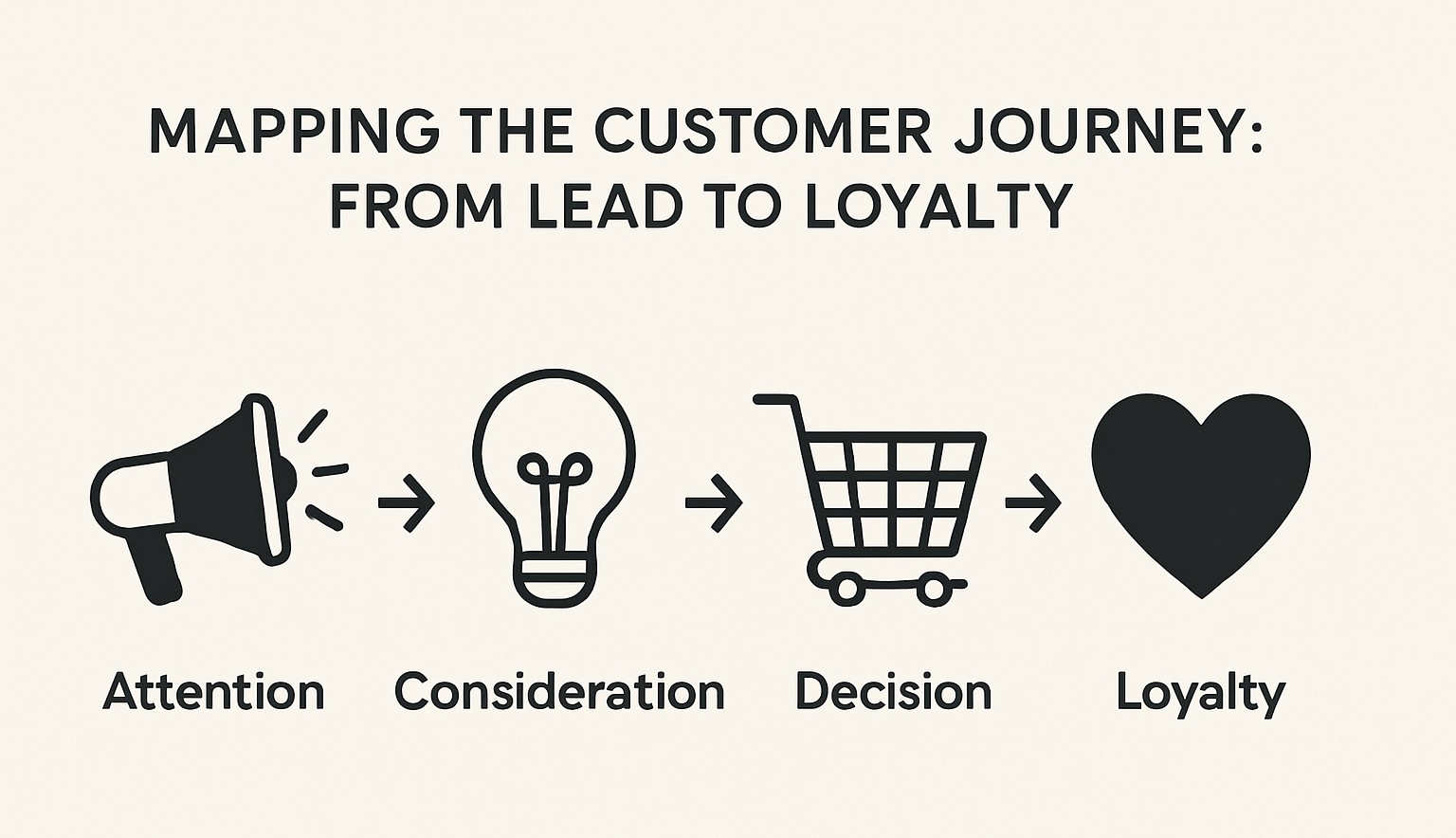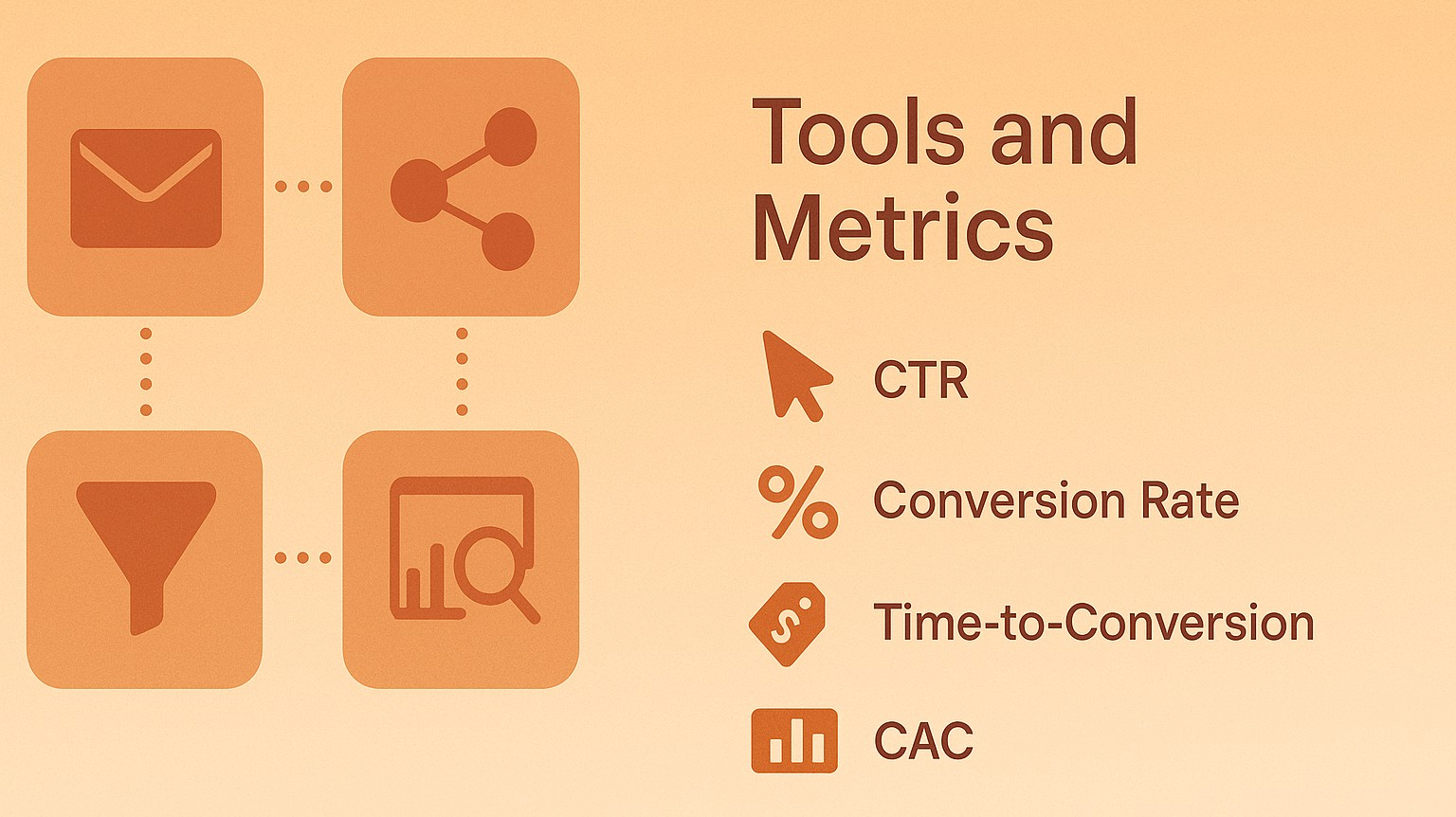Nurturing potential customers toward a purchase is one of the most important tasks of marketing. Thoughtful lead nurturing helps businesses establish sustainable communication with the target audience, increase their engagement and trust, and significantly improve conversion rates. From this article, you will learn what lead nurturing is, what stages this process includes, what strategies and tools are most effective, and what metrics allow you to evaluate its effectiveness.
Understanding Lead Nurturing
Lead nurturing is a process of interacting with prospects aimed at building sustainable and trusting relationships with them at all stages of the customer journey (sales funnel). It includes various strategies and tactics with which marketers and sales managers attract the attention of the audience, generate interest in the product, and push them to conversion actions.
In digital marketing, communication channels such as email newsletters, social networks, content platforms, messengers, and advertising tools are actively used to cultivate leads. Properly implemented preparation of potential clients for purchase helps businesses increase conversion, strengthen the trust of the target audience, increase brand awareness, and, as a result, increase profits.
With a holistic approach and a focus on customer's interests, lead nurturing provides companies with a number of key benefits:
- Two-way communication. Preparing potential customers for purchase involves a constant exchange of information between the company and the leads. The business introduces the audience to the range, characteristics, and advantages of its products. In return, it receives data from prospects about demographics, interests, preferences, behavior, and so on.
- Increased engagement. Communication and interaction with leads at every stage of the customer journey stimulate their engagement and motivate them to take conversion actions: opening emails, clicking on links, and placing orders.
- Deep personalization and targeting. By collecting and processing contacts and other information about leads, specialists can analyze the received data and use it to create personalized campaigns and offers.
- Lead segmentation. The lead nurturing process helps accurately assess engagement levels and other lead parameters, identify the most valuable potential clients, and correctly prioritize interactions with them.
- Building trust. By nurturing leads for purchase, companies build strong, trusting relationships with their target audience. This, in turn, has a positive impact on their loyalty and can improve sales performance.
- Acceleration of the sales cycle. Increasing awareness and engagement of potential customers can positively influence their decisions. Properly chosen strategies and tools for audience interaction can reduce the time from product introduction to purchase.
Mapping the Customer Journey
For the successful implementation of the lead nurturing strategy, it is extremely important to correctly build communication with potential clients at all stages of their customer journey. Each stage requires an individual approach to smoothly guide leads from their first acquaintance with the brand to their transformation into loyal clients.
It is important not only to attract attention but also to provide leads with consistent support aimed at increasing interest, trust, and readiness to buy. Let's consider how to most effectively interact with the audience at different stages of the sales funnel – from the first contact to building loyalty.

Attention and Interest
In the initial stage of the customer journey, the lead becomes aware of the brand and product but typically remains cold, not showing active interest in them. The main task of the marketer and sales manager is to involve the potential client in the sales funnel.
To arouse interest in leads, specialists conduct complex marketing campaigns through various communication channels with the target audience: email newsletters, paid advertising, blog articles, and posts on social networks. Each message must include CTA elements that motivate the lead to subsequent actions.
Consideration
The second stage of the customer journey begins after a prospect has become familiar with a company’s offering and has begun to consider it as a possible solution to their problems or needs. During the consideration stage, leads evaluate the products or services offered to them and compare them with relevant alternatives.
Primarily, potential customers need assurance that the brand and its products are trustworthy. Timely nurturing measures can help push them to buy: for example, sending detailed commercial offers, product reviews and demos, and personalized presentations.
Solution
At the third stage, the lead reviews the information received and becomes convinced that the company and its product will fully meet their needs within the allocated budget. As a result, the potential client makes the final decision to purchase and becomes an actual buyer.
The transition from the second to the third stage often takes a long time, as a number of factors influence the decision. Offers of a free trial period, free consultation, and any promotions or discounts are suitable as elements of a lead nurturing campaign.
Retention and Loyalty
The final phase of the customer journey begins when the customer successfully uses the product and continues to buy from the same company. At this stage, the business should not only focus on providing excellent service to its customers but also encourage them to make repeat purchases.
Loyalty programs, special offers for regular customers, and other warm-up formats demonstrate high efficiency in the context of customer retention. Additional bonuses and discounts on subsequent orders work well.
Key Strategies and Best Practices
Effective lead nurturing requires a systematic approach that combines strategic planning, flexibility, and constant adaptation to audience behavior. To achieve sustainable results, it is important not only to follow a general concept but also to implement practical lead nurturing strategies tailored to your target audience and stages of the customer journey. Here are some recommendations to help you build this process consistently and effectively.
Focus on Your Most Promising Leads
Start your work in this direction with lead scoring. This method will allow you to comprehensively evaluate all the leads in your database and determine at what stage of the sales funnel each of them is. Based on the scoring results, compile a rating of potential clients. Mark in it the leads with the highest level of interest, as well as those with the highest amount of potential income. It is with them that you should interact most actively and intensively, providing them with relevant personalized offers.
Plan Your Lead Nurturing Process
Before you start a campaign, you need to plan it thoroughly to make the stages of the process consistent and coherent. First, define the main goals and objectives, the target audience (leads with high, medium, or low interest), the communication channels, as well as the number, frequency, and format of messages. While at it, ensure you set a target response time for incoming leads to increase the chances of conversion. Consider possible scenarios, including if the campaign goals are not achieved the first time.
Try Different Tactics and Evaluate the Results
Don’t limit yourself to just one or two lead nurturing tactics. Experiment with different options at every stage of the sales funnel. Don’t forget to regularly monitor the metrics of your current campaigns: measure the open rate of your emails, clicks on links, the number of registrations on your website, downloads of your free demo version of the product, and so on. Conduct regular A/B testing to quickly identify the most converting options for your messages and content.
Implement the Best Practices
In addition to strategies, proven practices also play an important role in making the process more structured, efficient, and easy to implement. We have identified three lead nurturing best practices that will help optimize work with potential clients and increase the effectiveness of campaigns:
- Create a customer profile. Create a portrait of your ideal buyer, considering the demographics, behavior, preferences, and needs of your potential and existing customers. Combine this information into a single profile. Use its data to prepare messages and content at different stages of the sales funnel.
- Campaign analysis. A comprehensive assessment of campaign results will help you track the effectiveness of lead nurturing and make timely changes to certain stages. To achieve this, you need to regularly measure the engagement of potential customers (openings, clicks, views) and the lead conversion rate.
- Implementation of automation. One of the key practices for successful lead generation is the use of automation tools. They can speed up and simplify routine tasks, ensure consistency of communications, and improve the overall effectiveness of campaigns. With their help, you can build personalized interaction scenarios, track the behavior of leads, and quickly respond to changes in their interests.
Tools and Metrics

Specialized lead nurturing software brings considerable benefits to modern marketers and sales managers. Such services help them optimize communication and interaction with clients as they move through the sales funnel. Solutions that automate key processes and significantly simplify work with leads are especially in demand. Here are some of them:
- SendPulse. A versatile digital marketing platform that lets you create campaigns and manage various lead communication formats. With this service, you can interact with potential customers via email newsletters, chatbots, web forms, landing pages, and automation tools. It also provides functionality for campaign planning, message personalization, and audience segmentation.
- SaveMyLeads. This popular service for lead nurturing automation allows you to integrate your Facebook and TikTok advertising accounts, as well as Google Lead Forms, with over 150 apps. Thanks to SML, you can automate transferring new leads to email/SMS services, messengers, CRM, and other platforms in a few minutes.
- Pipedrive. Marketers and sales managers often use it to create and manage sales funnels. With its help, businesses can effectively track interactions with their customers at all stages of the lead journey. Advanced analytics tools allow you to measure key campaign metrics and develop a detailed customer profile based on a wide range of data.
- Semrush. This is a professional service for marketing campaign analytics. It is very useful in assessing the effectiveness of interactions with potential clients. The platform collects and processes a lot of data from different communication channels (websites, email, paid advertising, social networks), providing detailed insights on the results of campaigns.
To get real value from your tools, you need to regularly track your lead nurturing campaigns' key performance indicators. The main KPIs that will help you measure the effectiveness of your efforts are:
- Click-Through Rates (CTR). This value shows the proportion of recipients who clicked on one or more links in an email or other message.
- Conversion Rates (CR). The lead conversion metric shows the percentage of potential customers who completed a specific target action (such as a purchase or subscription) out of the total number of leads involved in the campaign.
- Time to Conversion (T2C). This KPI measures the average time it takes to convert a lead into a customer.
- Customer Acquisition Cost (CAC). This metric measures the average amount a business spends to acquire one new customer over a specific time period.
Final Thoughts
Lead nurturing is a key tool in the arsenal of marketers and sales managers. It allows not only for stimulating the interest of potential customers but also for guiding them to make decisions at each stage of the sales funnel. The concept implies the use of various channels and methods of communication based on data about the behavior, needs, and preferences of leads.
Automated lead nurturing is especially valuable today. This approach allows companies to significantly speed up work processes, increase the accuracy of personalization, and achieve better engagement and conversion rates. Modern software solutions help not only automate routine tasks but also track key performance indicators in detail. This makes lead nurturing campaigns more effective and manageable.
If you want to automate processes and boost productivity, check out SaveMyLeads. No special skills are required — explore integration setup examples:
